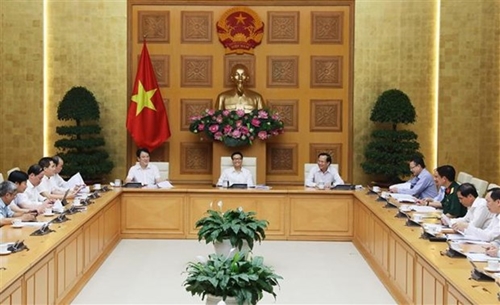He made the request while chairing a meeting in Hanoi on July 14 of the Central Steering Committee for the National Target Program on Sustainable Poverty Reduction for the 2016-2020 period.
The Deputy PM also told ministries, agencies and localities to approve the National Target Programme on sustainable poverty reduction and social welfare for the 2021-2025 period, and quickly re-arrange administrative units at communal and district level for 2019-2021 for the effective implementation of sustainable poverty reduction policies and programs.
    |
 |
|
Deputy Prime Minister Vu Duc Dam (C) at the meeting |
Deputy Minister of Labour, Invalids and Social Affairs Le Van Thanh reported at the meeting that over 22.8 trillion VND (991 million USD) from the State budget has been allocated for the implementation of social welfare and poverty reduction policies.
Over 10 trillion VND from the State budget has been earmarked for carrying out the National Target Programme on Sustainable Poverty Reduction this year.
As of June 30, the Vietnam Bank for Social Policies offered loans worth more than 18.6 trillion VND to 423,000 poor and near-poor households.
The poverty rate is expected to decrease to below 3 percent later this year from 3.75 percent in 2019. The rate has been falling by 1-1.5 percent on average each year, while the poverty rate in poor districts has reduced by more than 4 percent, thus fulfilling goals set by the National Assembly and Government.
Regarding support for those hit by COVID-19, Thanh said localities have approved a list of 15.8 million people eligible for total funding of 17.5 trillion VND, more than 11.2 trillion VND of which has been disbursed for more than 11 million people, including over 7 million poor and near-poor households.
Participants said the rate of poor households remains high in several mountainous provinces, especially in the northern mountainous and Central Highlands regions.
They highlighted a need to specify sustainable poverty goals in annual and periodic socio-economic development plan, and take into account specific conditions in each region when designing poverty reduction policies.
Several opinions also suggested pooling capital from organisations and businesses for poverty reduction efforts.
Source: VNA